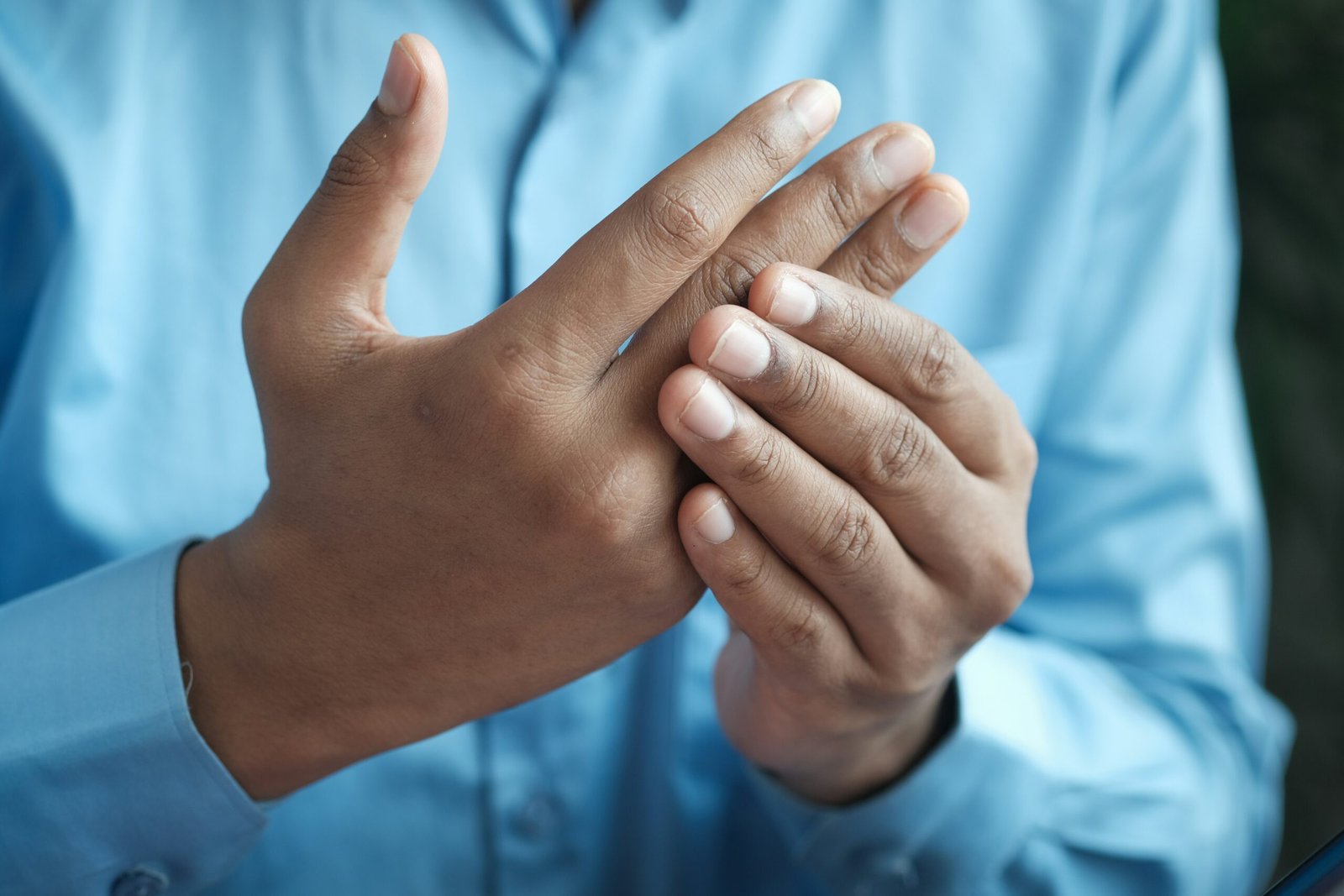
Arthritis is a common condition that affects millions of people worldwide. It is characterized by inflammation in the joints, which can cause pain, stiffness, and reduced mobility. While there are several different types of arthritis, the most common form is osteoarthritis, which occurs when the protective cartilage that cushions the ends of the bones wears down over time.
Many people believe that the repetitive impact and stress placed on the joints during running can contribute to the development of arthritis. However, recent research suggests that this may not be the case. In fact, several studies have found that regular running may actually have a protective effect on the joints and reduce the risk of developing arthritis.
One study published in the journal Medicine and Science in Sports and Exercise followed a group of runners and non-runners over a period of several years. The researchers found that the runners had a significantly lower risk of developing osteoarthritis compared to the non-runners. The study also found that the runners had healthier cartilage and stronger knee joints, suggesting that running may help to strengthen the joints and protect against arthritis.
Another study published in the journal Arthritis Care & Research looked at the impact of running on people who already had arthritis. The researchers found that running did not worsen symptoms or cause further damage to the joints. In fact, the runners in the study reported less pain and better overall function compared to the non-runners.
So, if running doesn’t cause arthritis, why do some people still believe that it does? One possible explanation is that running can exacerbate symptoms in people who already have arthritis. The repetitive impact and stress placed on the joints during running can cause pain and inflammation, especially if the person has underlying joint damage or instability. However, this is not the same as causing arthritis itself.
It’s important to note that while running may not cause arthritis, it is still important to take precautions to protect your joints and reduce your risk of injury. This includes wearing proper footwear, warming up before running, and gradually increasing your mileage and intensity. It’s also important to listen to your body and rest if you experience pain or discomfort.
In conclusion, the latest scientific evidence suggests that running does not cause arthritis. In fact, regular running may actually have a protective effect on the joints and reduce the risk of developing arthritis. However, it’s important to take precautions and listen to your body to protect your joints and reduce the risk of injury.
Understanding Arthritis
Arthritis is a broad term that encompasses over 100 different conditions that affect the joints. The most common form of arthritis is osteoarthritis, which occurs when the protective cartilage that cushions the ends of the bones wears down over time. This can result in pain, stiffness, and swelling in the affected joints.
There are several risk factors for developing arthritis, including age, genetics, previous joint injuries, and certain medical conditions. However, the role of exercise, particularly running, in the development of arthritis is still a topic of discussion among experts.
Some studies suggest that running may increase the risk of developing arthritis, especially in the knees. The repetitive impact and stress placed on the joints during running can potentially accelerate the wear and tear of the cartilage. However, other research has shown that moderate running can actually have a protective effect on joint health.
One study published in the journal Arthritis & Rheumatology found that running at a moderate pace for up to 15 years was not associated with an increased risk of developing knee osteoarthritis. In fact, the researchers found that runners had a lower risk of needing a total knee replacement compared to non-runners.
Another study published in the Journal of Orthopaedic & Sports Physical Therapy found that runners had a lower incidence of hip and knee osteoarthritis compared to non-runners. The researchers concluded that running may have a positive effect on joint health by promoting the production of joint fluid, which helps lubricate the joints and reduce friction.
It’s important to note that these studies focused on moderate running and did not examine the effects of excessive or high-impact running, which may have different implications for joint health. Additionally, individual factors such as body mechanics, running technique, and pre-existing joint conditions can also play a role in the development of arthritis.
Overall, the relationship between running and arthritis is complex and multifaceted. While moderate running may have potential benefits for joint health, it’s crucial to listen to your body, maintain proper form, and consult with a healthcare professional if you have any concerns or pre-existing joint conditions.
The Benefits of Running
Before we delve into the relationship between running and arthritis, it’s important to highlight the numerous benefits of running as a form of exercise. Regular running has been shown to improve cardiovascular health, strengthen muscles, boost mood, and maintain a healthy weight.
Running also helps to improve bone density, which is especially important as we age. It can help prevent conditions such as osteoporosis, which weakens the bones and increases the risk of fractures. Additionally, running can enhance joint stability and flexibility, which are crucial for maintaining overall joint health.
Furthermore, running has been linked to improved cognitive function. Studies have shown that aerobic exercise, such as running, increases blood flow to the brain, which can enhance memory, attention, and problem-solving skills. It can also help reduce the risk of age-related cognitive decline and improve overall brain health.
In addition to its physical and cognitive benefits, running is also known to have positive effects on mental health. It has been shown to reduce symptoms of depression and anxiety, improve self-esteem, and promote a sense of well-being. The rhythmic nature of running, combined with the release of endorphins, can create a natural “runner’s high” that helps to alleviate stress and improve mood.
Moreover, running can be a social activity that fosters connections and builds relationships. Joining a running group or participating in races can provide a sense of community and support, motivating individuals to stick to their running routine and achieve their fitness goals.
Lastly, running is a versatile form of exercise that can be adapted to fit individual preferences and goals. Whether it’s running on a treadmill, exploring scenic trails, or participating in competitive races, there are endless options to keep running interesting and challenging.
In conclusion, running offers a multitude of benefits for both physical and mental well-being. From improving cardiovascular health and bone density to enhancing cognitive function and reducing stress, running is a holistic form of exercise that can contribute to a healthier and happier life.
Despite the numerous benefits of running on joint health, it is crucial to approach this form of exercise with caution and take necessary precautions to prevent injuries. One key factor in preventing joint injuries is ensuring proper running technique. Running with improper form can place excessive stress on the joints, leading to pain and potential damage.
It is essential to maintain an upright posture while running, with the head aligned over the shoulders and the shoulders relaxed. This helps distribute the impact evenly throughout the body, reducing the strain on the joints. Additionally, landing softly on the midfoot rather than the heel can minimize the shock absorbed by the joints.
Another crucial aspect to consider is the importance of gradually increasing mileage and intensity. Sudden spikes in running volume or intensity can overload the joints and increase the risk of injury. It is recommended to follow a structured training plan that includes rest days and cross-training activities to allow the body to recover and adapt to the demands of running.
Furthermore, it is essential to address any underlying biomechanical issues that may predispose an individual to joint injuries. Consulting with a sports medicine professional or a physical therapist can help identify and correct any muscle imbalances, weakness, or flexibility limitations that may contribute to joint stress during running.
Additionally, incorporating strength training exercises into a running routine can further enhance joint health. Strengthening the muscles around the joints, such as the quadriceps, hamstrings, and glutes, can provide better support and stability, reducing the risk of joint injuries.
Lastly, listening to the body and recognizing signs of overuse or injury is vital in maintaining joint health while running. Persistent joint pain, swelling, or a decrease in performance should not be ignored and may require medical attention. Resting and seeking appropriate treatment when necessary can prevent minor issues from developing into more severe conditions.
In conclusion, running can have a positive impact on joint health by stimulating synovial fluid production, strengthening the supporting muscles, and reducing the risk of osteoarthritis. However, it is crucial to approach running with proper technique, gradually increase mileage, address biomechanical issues, incorporate strength training, and listen to the body to prevent joint injuries and maintain long-term joint health.
Preventing Joint Injuries
To minimize the risk of joint injuries while running, it’s important to follow these guidelines:
- Wear proper running shoes that provide adequate cushioning and support for your feet.
- Gradually increase your running mileage and intensity to allow your body to adapt.
- Include strength training exercises in your routine to strengthen the muscles around your joints.
- Listen to your body and take rest days when needed to allow for proper recovery.
- Warm up before each run and cool down afterward to prepare your muscles and joints.
- Consider cross-training with low-impact activities such as swimming or cycling to reduce the repetitive stress on your joints.
- Pay attention to your running form and technique to ensure proper alignment and reduce stress on your joints.
- Modify your running surface when possible to reduce impact on your joints. For example, opt for softer surfaces like grass or trails instead of concrete or asphalt.
- Stay hydrated and maintain a healthy diet to support overall joint health.
- Consider using joint supplements or anti-inflammatory medications under the guidance of a healthcare professional to manage joint pain and inflammation.
- Don’t ignore any pain or discomfort in your joints. If you experience persistent or worsening pain, seek medical attention to prevent further damage.
By following these guidelines, you can significantly reduce the risk of joint injuries while running and ensure the longevity of your running journey. Remember, prevention is always better than cure, so prioritize your joint health and enjoy a pain-free running experience.


